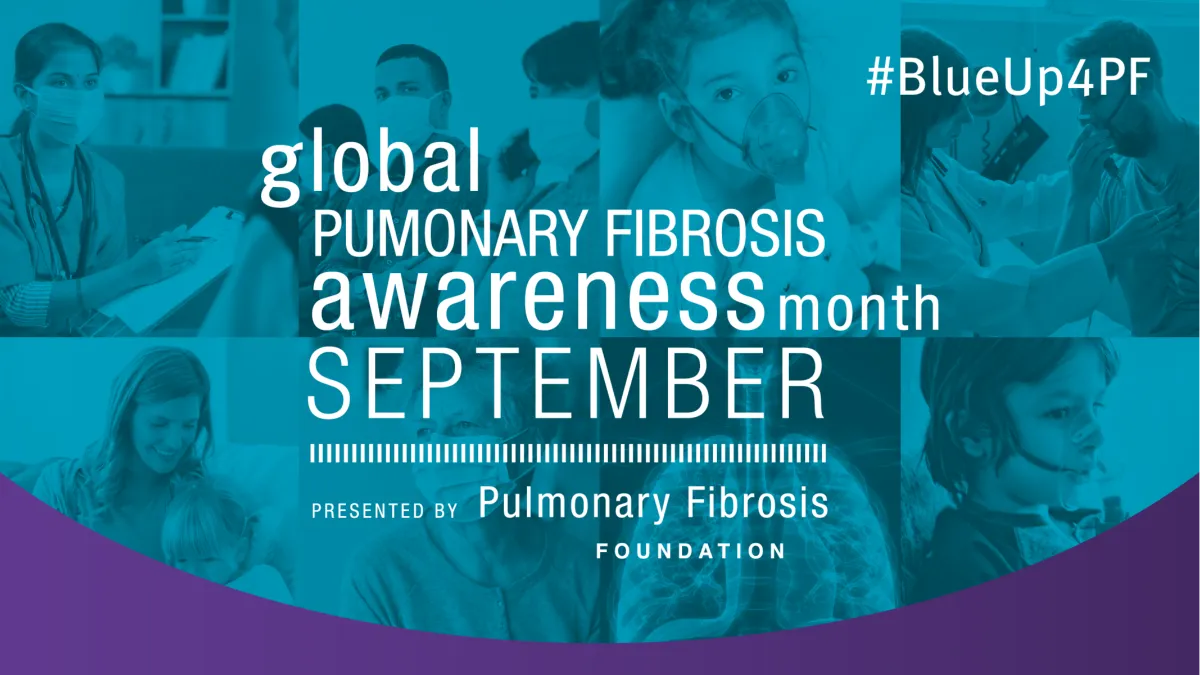5 things you need to know about Idiopathic Pulmonary Fibrosis

Pulmonary fibrosis (PF) is among more than 200 other types of interstitial lung diseases (ILD)—idiopathic pulmonary fibrosis (IPF) is the name given to the condition when there is no apparent reason for its development and progression. There is currently no cure for IPF, and it is a very challenging disease process because it can be difficult to diagnose and manage. Early detection is imperative to develop an effective treatment plan to slow this progressive lung disease.
1. What is Idiopathic Pulmonary Fibrosis? #
Idiopathic pulmonary fibrosis is a restrictive disease and is the most common type of pulmonary fibrosis that causes lung scarring. As the scarred lung tissue becomes thickened and stiff, breathing and absorbing oxygen into the bloodstream becomes exceedingly difficult.
Lung damage is irreversible as IPF worsens, and patients are at risk for severe, unexpected, and possibly fatal acute exacerbations.
2. Who is affected by IPF? #
Over 250,000 people in the United States and around three million worldwide live with IPF. More men are affected by the disease than women, and the incidence of IPF increases with age.It typically presents as unexplained shortness of breath in people 60-70 years old.
3. What causes IPF? #
The lungs have tiny air sacs called alveoli, and when they are damaged, they develop scarring. As those scars increase, the lungs become stiff, making it difficult to move air in and out and to get oxygen into the blood.
One of the most frustrating aspects of IPF is its unknown cause. However, some contributing factors make some people more at risk, including:
- Exposure to occupational factors–dust, fumes, farming, etc
- Smoking
- Chronic viral infections
- Genetics and family history of IPF
- Gastro-esophageal reflux disease (GERD)
It’s still not clear, though, whether these factors can be primary direct causes of IPF.
4. Symptoms of IPF #
Early in IPF, many people have no specific symptoms, only a bothersome and persistent dry cough. Unfortunately, the cough can become shortness of breath as scarring builds up in the lungs’ air sacs. Eventually, exercise and even daily activities become difficult without experiencing bouts of breathlessness, and simple things like showering and getting dressed, even speaking and eating, can be a burden.
Additional symptoms can include:
- Fatigue and weakness
- Chest pain or discomfort
- Loss of appetite
- Weight loss
Another symptom of IPF is “clubbing” of the fingertips—clubbing results from too little oxygen circulating in the blood. The skin under the fingernails becomes thickened, and the nails curve downward.
5. Early and accurate diagnosis #
Although early diagnosis is critical, many times it’s challenging to get an accurate diagnosis because the symptoms are similar to common lung diseases like COPD and asthma. After ruling out more common conditions, the doctor will gather information that may help identify what is causing the lung injury and scarring, including medical and personal history, work and home environment, and any current illness in the family.
Diagnostic testing can include:
Pulmonary function tests. Scarring causes the lungs to shrink and become stiff, so they can’t expand properly and hold adequate air. Pulmonary function tests can measure how much air the lungs can hold and how well they work.
Blood work. It’s crucial to find out if a person’s lung injury is from some type of exposure or other disease which could be associated with the development of IPF. Blood work can also reveal that the PF is not idiopathic but the result of an autoimmune disease or environmental exposure.
High-resolution Computed Tomography Scan. The doctor will order a special chest X-ray called a high-resolution computed tomography (HRCT) scan that can show the lung in fine detail. A healthy lung looks almost black on a CAT scan, but scar tissue and inflammation appear white or grey. There is a specific scarring pattern called usual interstitial pneumonia (UIP) that may appear and helps to diagnose IPF.
Sometimes all these tests still won’t reveal an answer, and the doctor will order a lung biopsy to try and identify which of the 200 types of PF a patient is experiencing.
IPF is a progressive disease and gradually requires increasing oxygen. There is no way to predict how long someone with IPF will live, but with an early and accurate diagnosis, appropriate treatments can help extend overall quality and time of life.
If you’ve recently discovered you have IPF or any other type of PF, consider joining a PF support group to help supplement the care you’re getting from your healthcare team. Support groups can educate you about the disease and available treatments and put you in touch with others living with PF to connect and share your experiences. You can find support groups near you through www.pulmonaryfibrosis.org.
Clinical statements come from these sources:
(n.d.). Idiopathic Pulmonary Fibrosis. Pulmonary Fibrosis Foundation. Retrieved August 3, 2023, from https://www.pulmonaryfibrosis.org/understanding-pff/types-of-pulmonary-fibrosis
(n.d.). IPF Overview. Boehringer Ingelheim. Retrieved August 3, 2023, from https://www.boehringer-ingelheim.com/respiratory/ipf/facts-about-ipf
Written by

Allison DeMajistre
BSN, RN, CCRN
Allison DeMajistre is a freelance medical writer with a decade of clinical experience as a critical care registered nurse. She writes about cardiology, pulmonology, and several other medical topics. She strives to simplify complex medical information for patients and to write insightful and informative articles for health care professionals.


